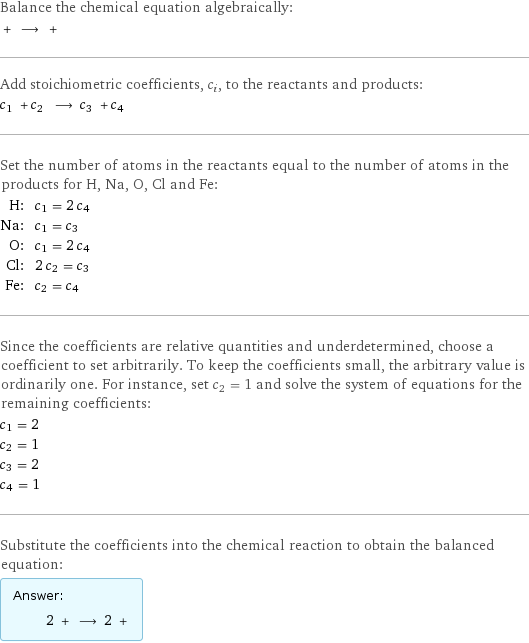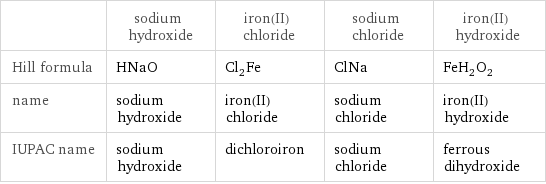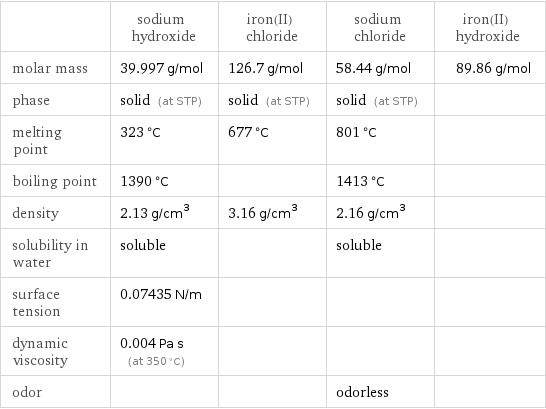Input interpretation

sodium hydroxide + iron(II) chloride ⟶ sodium chloride + iron(II) hydroxide
Balanced equation

Balance the chemical equation algebraically: + ⟶ + Add stoichiometric coefficients, c_i, to the reactants and products: c_1 + c_2 ⟶ c_3 + c_4 Set the number of atoms in the reactants equal to the number of atoms in the products for H, Na, O, Cl and Fe: H: | c_1 = 2 c_4 Na: | c_1 = c_3 O: | c_1 = 2 c_4 Cl: | 2 c_2 = c_3 Fe: | c_2 = c_4 Since the coefficients are relative quantities and underdetermined, choose a coefficient to set arbitrarily. To keep the coefficients small, the arbitrary value is ordinarily one. For instance, set c_2 = 1 and solve the system of equations for the remaining coefficients: c_1 = 2 c_2 = 1 c_3 = 2 c_4 = 1 Substitute the coefficients into the chemical reaction to obtain the balanced equation: Answer: | | 2 + ⟶ 2 +
Structures

+ ⟶ +
Names

sodium hydroxide + iron(II) chloride ⟶ sodium chloride + iron(II) hydroxide
Chemical names and formulas

| sodium hydroxide | iron(II) chloride | sodium chloride | iron(II) hydroxide Hill formula | HNaO | Cl_2Fe | ClNa | FeH_2O_2 name | sodium hydroxide | iron(II) chloride | sodium chloride | iron(II) hydroxide IUPAC name | sodium hydroxide | dichloroiron | sodium chloride | ferrous dihydroxide
Substance properties

| sodium hydroxide | iron(II) chloride | sodium chloride | iron(II) hydroxide molar mass | 39.997 g/mol | 126.7 g/mol | 58.44 g/mol | 89.86 g/mol phase | solid (at STP) | solid (at STP) | solid (at STP) | melting point | 323 °C | 677 °C | 801 °C | boiling point | 1390 °C | | 1413 °C | density | 2.13 g/cm^3 | 3.16 g/cm^3 | 2.16 g/cm^3 | solubility in water | soluble | | soluble | surface tension | 0.07435 N/m | | | dynamic viscosity | 0.004 Pa s (at 350 °C) | | | odor | | | odorless |
Units
